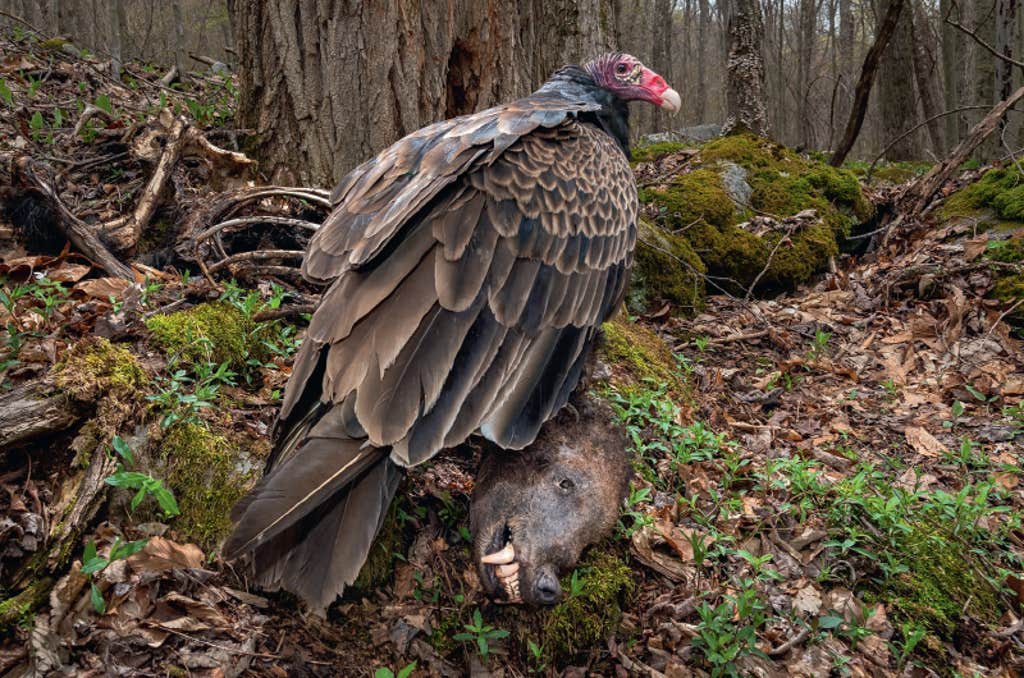The defensive posture and uncanny eye contact of the turkey vulture pictured here makes it seem as though we’re interrupting an intimate moment, but photographer Nathaniel Peck wasn’t even present when this particular image was snapped. Peck’s photo was shot with a camera trap.
Peck had caught wind of a deceased American black bear laying by a stream in West Virginia; knowing that its carcass would soon become a meal for scavenging animals, Peck set up his camera trap nearby, where it remained for six months. What resulted was this stunning close-up of a turkey vulture (Cathartes aura) that frequented the bear’s remains, sometimes for hours at a time. Though common throughout the United States, turkey vultures are relatively reclusive creatures, choosing to nest and breed in remote areas away from the public eye.

Whether it’s the vulture’s plump body, the bear’s parting grimace or its cleanly picked rib bones, Peck evoked a story of the vulture’s resourcefulness and rapturous feeding cycle in this one photo. The photo won first place in this year’s Bird Photographer of the Year contest in the category of animal behavior. Judge Paul Sterry commended the photographer’s choice of camera trap, which invites audiences to “witness hard-to-observe behavior in shy species.”
Vultures may be nature’s most reviled and misunderstood birds. These resourceful creatures are effectively nature’s composting bins, sniffing out carrion and other dead animals which would otherwise be left to rot, risking the spread of pathogens to other animals and humans. Today, they are also the most endangered group of birds in the world, according to some scientists. Climate-related ecosystem disruption and human development are among the usual suspects impacting their populations, but poison remains, by far, the largest threat to vultures around the world.
Turkey vulture populations seem to be the exception, for now. Among other things, their relative abundance has been attributed to their tendency to snack on smaller animals, which means contamination from lead or other sources is likely to impact only a single dinner guest, rather than taking out an entire population of birds. But as threats from human causes multiply, the birds are attracting more attention from conservationists, who want to ensure that turkey vultures can continue to live up to their name, Cathartes aura: It translates as “golden purifier.” ![]()
Lead photo by: Nathaniel Peck. Featured in Bird Photographer of the Year, Collection 9, published by Princeton University Press.
































